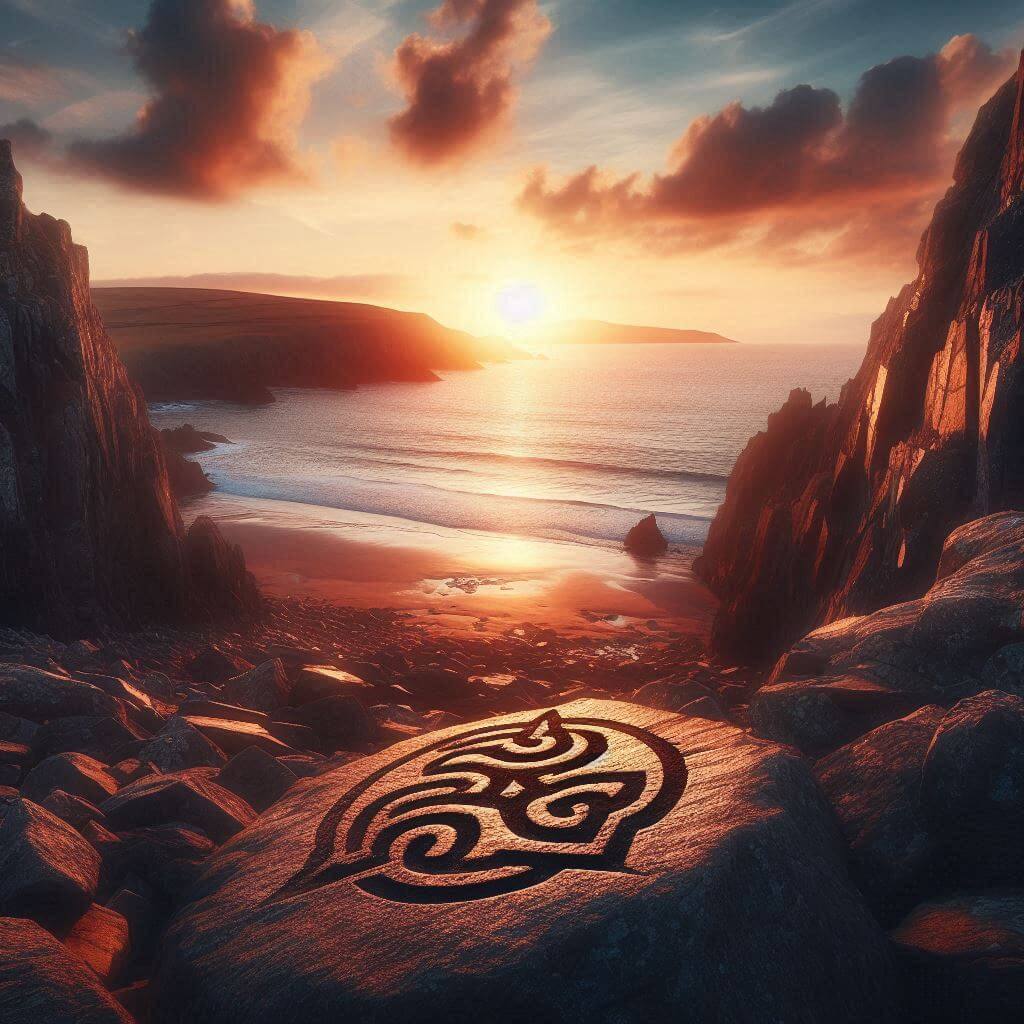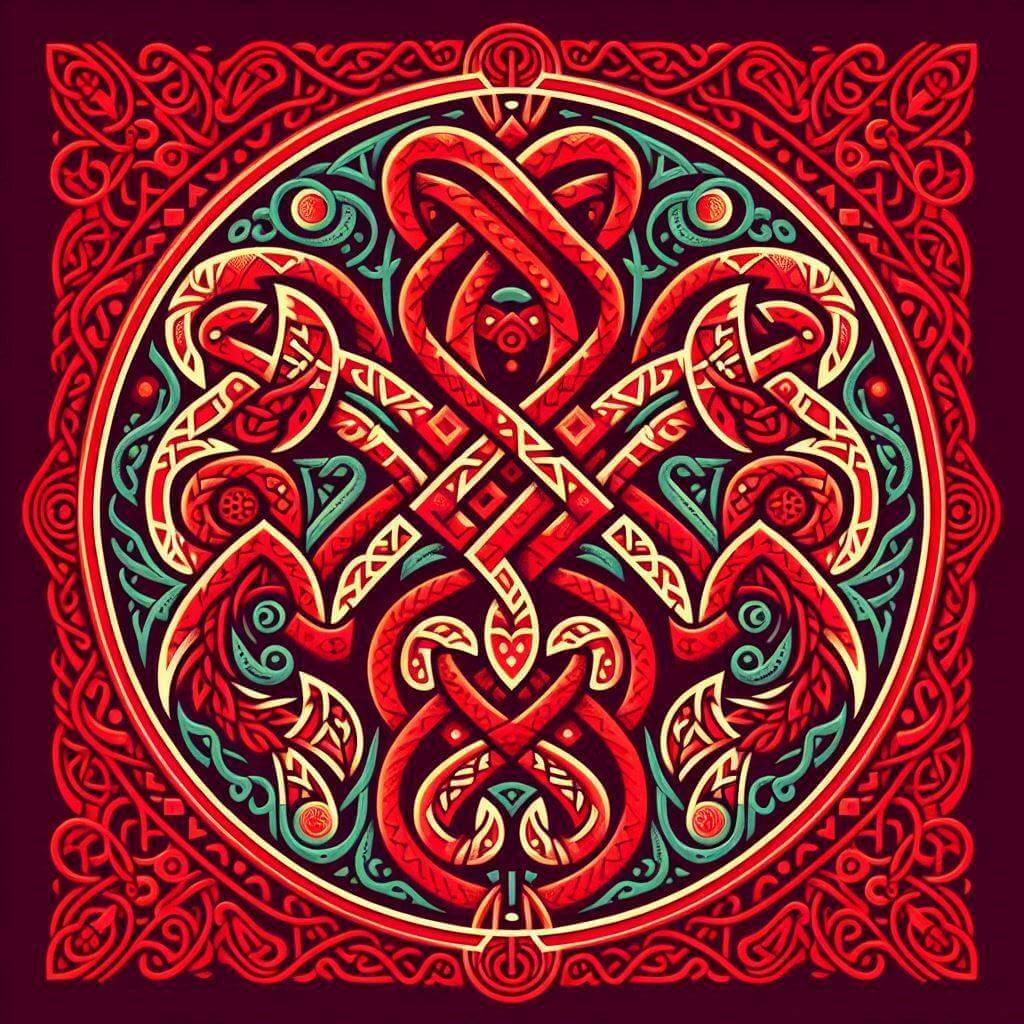The flag of the Isle of Man, also known as the Manx flag, features a striking red field with a unique symbol at its center: the triskelion, consisting of three armored legs conjoined at the thigh, with golden spurs on the heels, all set within a golden circle.
Isle of Man information
| National Flag Day | — |
| Sovereign state | No |
| Official name | Isle of Man |
| Capital | Douglas |
| Population | 83,314 |
| Area | 572 km² |
| Currency | Pound sterling (GBP) |
| Language | English, Manx |
| Continent | Europe |
| Region | Northern Europe |
| Subregion | — |
| Borders | — |
| Timezone | Greenwich Mean Time (GMT) UTC+0 |
| Calling code | +44 |
| Top-level domain | .im |
History of the Isle of Man Flag
 The current design of the Manx flag was officially adopted on July 9, 1932, although its origins and symbolism date back much further. The triskelion, or "three legs of Mann," has been associated with the island since at least the 13th century. This ancient symbol is believed to have Celtic or Norse origins, reflecting the island's rich cultural heritage and historical influences from various civilizations that have inhabited or ruled the Isle of Man over the centuries.
The current design of the Manx flag was officially adopted on July 9, 1932, although its origins and symbolism date back much further. The triskelion, or "three legs of Mann," has been associated with the island since at least the 13th century. This ancient symbol is believed to have Celtic or Norse origins, reflecting the island's rich cultural heritage and historical influences from various civilizations that have inhabited or ruled the Isle of Man over the centuries.
Symbolism and Design of the Isle of Man Flag
The flag's design is deeply rooted in Manx history and mythology. The red field symbolizes the ancient Kingdom of Mann and its historical ties to both Norse and Celtic cultures. The triskelion, or three-legged symbol, is said to represent the island's motto: "Quocunque Jeceris Stabit," which translates to "Whichever way you throw it, it will stand." This emblem symbolizes stability, resilience, and independence, qualities that have defined the Manx people throughout their history. The golden color of the legs and the surrounding circle adds a regal touch, emphasizing the island's unique status and heritage.
Usage and Significance of the Isle of Man Flag
 The Manx flag serves as a powerful symbol of national identity and pride for the people of the Isle of Man. It is prominently displayed during national celebrations, cultural events, and official ceremonies. The flag is also used to represent the island in international forums and sporting events, particularly in competitions where the Isle of Man participates separately from the United Kingdom. Its distinctive design makes it instantly recognizable, helping to promote awareness of the island's unique culture and semi-autonomous status as a British Crown Dependency.
The Manx flag serves as a powerful symbol of national identity and pride for the people of the Isle of Man. It is prominently displayed during national celebrations, cultural events, and official ceremonies. The flag is also used to represent the island in international forums and sporting events, particularly in competitions where the Isle of Man participates separately from the United Kingdom. Its distinctive design makes it instantly recognizable, helping to promote awareness of the island's unique culture and semi-autonomous status as a British Crown Dependency.
Interesting Facts About the Isle of Man Flag
- The triskelion symbol is one of the oldest known to man, with variations found in ancient Greek, Celtic, and Norse cultures, among others.
- The Isle of Man is not part of the United Kingdom but is a self-governing British Crown Dependency with its own parliament, laws, and traditions.
- The island is famous for hosting the annual Isle of Man TT (Tourist Trophy) motorcycle race, one of the most challenging and dangerous racing events in the world.
- The Manx flag is sometimes jokingly referred to as the "three legs of Mann" or the "three-legged flag" due to its unique central emblem.
- In heraldry, the triskelion is often associated with Sicily, another island with a rich and complex history, showing interesting parallels in symbolism across different cultures.